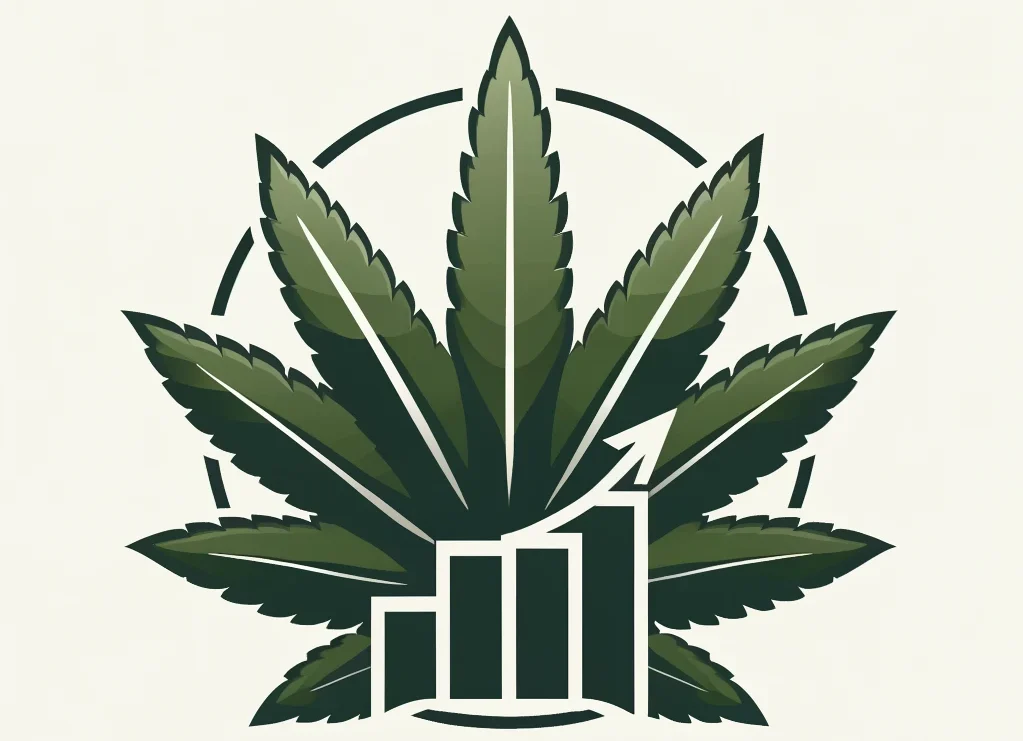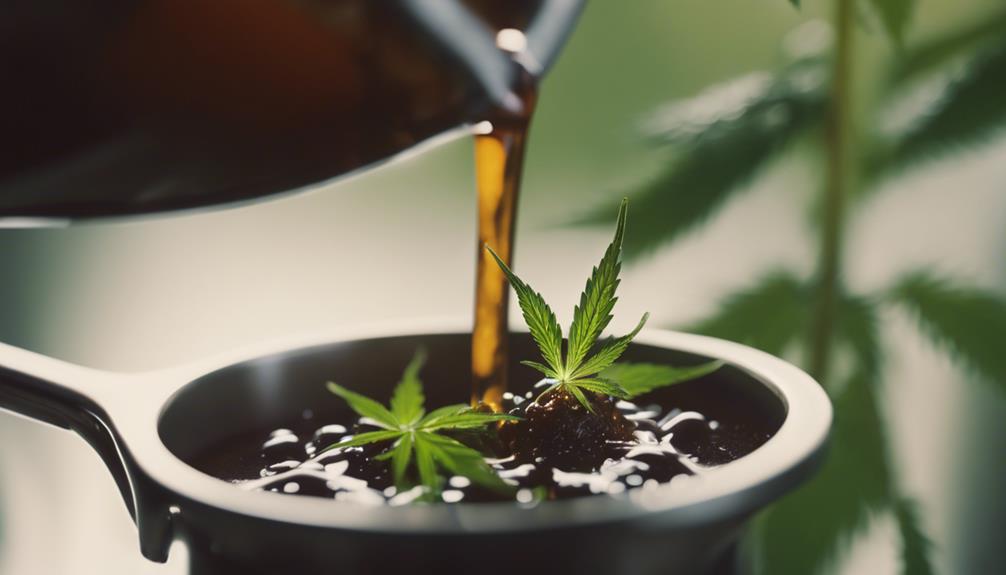THC is the main psychoactive compound in cannabis, affecting how it's consumed and its effects on health, medical use, legalization, and risks. Different strains possess varying levels of THC, leading to diverse psychoactive results. Consuming cannabis through smoking, vaporizing, edibles, or resin impacts THC absorption. Negative effects include impairments to brain development, heart rate, and lung health. Medicinally, cannabis aids pain relief and anxiety, with synthetic options available. Legalization has brought economic benefits but also mandates responsible use. Understanding these aspects provides insight into the complexities surrounding cannabis.
Key Takeaways
- THC is the primary psychoactive compound in cannabis.
- Different strains and products vary significantly in psychoactive properties due to THC.
- Cannabis consumption methods include smoking, vaping, and edibles.
- Heavy cannabis use can impair brain development and increase heart attack risk.
- Legalization for medicinal use has created job opportunities and tax revenue.
THC Is the Main Compound in Cannabis
THC, as the primary psychoactive compound found in cannabis, induces the sensation commonly referred to as the 'high'. This potent cannabinoid interacts with cannabinoid receptors in the brain and nervous system, leading to various effects on mood, cognition, perception, and motor coordination.
Strains with higher THC levels tend to produce stronger psychoactive effects, influencing the overall potency experienced by users. Over the years, there's been a noticeable increase in the concentration of THC in cannabis products, further amplifying the impact of its effects.
Understanding the role of THC as the main player in cannabis helps shed light on why different strains and products can vary significantly in their psychoactive properties, catering to individual preferences for freedom in cannabis consumption.
Various Forms of Cannabis Consumption
Exploring the diverse landscape of cannabis consumption reveals a multitude of methods and techniques utilized by individuals seeking various effects and experiences. When it comes to consuming cannabis, there are several popular methods:
- Smoking hand-rolled cigarettes, pipes, water pipes, or blunts allows for quick absorption of THC into the bloodstream.
- Vaporizers provide a smoke-free option for inhaling the active ingredients of cannabis.
- Edibles and teas infused with cannabis offer a discreet and enjoyable way to consume the plant.
- Smoking or ingesting THC-rich resins from the marijuana plant, as well as dabbing concentrated THC-rich resins, are common practices among cannabis users.
Each method offers a unique consumption experience, catering to different preferences and needs.
Negative Effects on Health
Negative effects on health from cannabis use can manifest in various ways, affecting different aspects of physical and mental well-being. Marijuana use can impair brain development, leading to issues with thinking, memory, and learning functions. Heavy use of marijuana can elevate heart rate, increasing the risk of heart attack.
Pregnant women who use cannabis may harm the fetal brain, impacting the child's development. Smoking marijuana can irritate the lungs, potentially causing respiratory problems. Adolescent use of marijuana, especially heavy use, can result in a decline in IQ over time. These health effects are often associated with the consumption of THC, the psychoactive compound responsible for the 'high' experienced when using cannabis.
Medical Uses of Cannabis
Cannabis is utilized for various medicinal purposes, including pain relief, anxiety reduction, and muscle spasticity.
- It provides relief for cancer patients undergoing chemotherapy.
- Legal in certain areas for prescribed medical use.
- Synthetic cannabinoids like Marinol® are FDA-approved for specific conditions.
- Sativex® blends THC and CBD to treat physical and psychological disorders effectively.
Cannabis has shown promise in alleviating symptoms and improving the quality of life for many individuals. With ongoing research and advancements in medical cannabis products, more treatment options may become available to those in need. The potential benefits of cannabis in the medical field continue to be explored, offering hope for those seeking alternative therapeutic solutions.
Legalization of Cannabis in Some Regions
Legalization of cannabis for medicinal purposes has brought about significant changes in some regions, impacting both individuals and the economy. This move hasn't only provided patients with access to the potential benefits of cannabis but has also created new job opportunities and increased tax revenue within the industry.
Regulations surrounding the prescription and use of medical cannabis are strict to guarantee responsible consumption and patient monitoring. While some countries have legalized cannabis for both medical and recreational purposes, the legal status of cannabis varies globally.
It's essential for individuals in regions where cannabis is legalized to understand and comply with local laws and regulations to avoid any legal repercussions.
Risks Associated With Cannabis Use
Moving from the discussion of the positive impacts of cannabis legalization, it's important to understand the potential risks associated with its use. When considering cannabis use, several risks come into play:
- Cannabis can impair judgment and coordination, elevating the risk of accidents.
- Heavy cannabis use, especially during adolescence, may negatively affect brain development.
- There's a potential for developing marijuana use disorder, leading to addiction and withdrawal symptoms.
- Pregnant women who use cannabis may encounter issues with child development.
These risks underline the importance of informed and responsible cannabis consumption to safeguard mental health and overall well-being.
Impact on Brain Development
Impairing brain development, especially in adolescents, cannabis can have lasting effects on cognitive functions such as memory and learning. Heavy marijuana use during adolescence has been associated with a decline in IQ over time. The use of cannabis at a young age can result in long-term alterations in brain structure and function. Regular cannabis use in adolescence has been shown to modify brain connectivity and decrease gray matter volume, highlighting the vulnerability of the developing brain during this critical period. These effects underscore the importance of considering the impacts of cannabis on brain development, as it can have significant consequences on cognitive abilities and overall brain health.
| Cannabis Use in Adolescents | Impact on Brain Development | THC Effects | Health Effects |
|---|---|---|---|
| Linked to cognitive impairments | Long-term changes in brain structure | Modifies brain connectivity | Alters brain function |
Frequently Asked Questions
What Are 5 Facts About Cannabis?
Medical benefits of cannabis include pain relief and anxiety reduction. Legalization status varies globally. Consumption methods range from smoking to edibles. Impact on health can be positive or negative. Cultivation process involves careful monitoring for ideal growth.
What Is Cannabis Classified as Quizlet?
Cannabis is classified as a Schedule I drug federally, indicating high abuse potential and no accepted medical use. Despite federal restrictions, many states have legalized it. Understanding its legal status is important for those considering its use.
Which of the Following Is True About Vaping Cannabis Quizlet?
Vaping cannabis offers benefits like better dosage control and discreet consumption. Health risks, legal implications, and popularity of strains vary. Understanding the process is essential for safe use. I find vaping cannabis intriguing.
What Are the Details of Cannabis?
Medical benefits, legalization status, consumption methods, side effects, and cultivation techniques offer a thorough view of cannabis. Research shows potential benefits, varying legal statuses, diverse consumption options, potential side effects, and evolving cultivation methods.
Conclusion
To sum up, cannabis contains THC as its main compound and can be consumed in various forms. While it has potential medical benefits, it also has negative effects on health and risks associated with its use.
The legalization of cannabis in some regions has led to debates about its impact on society. It's important to understand both the potential benefits and risks associated with cannabis use before making informed decisions.




